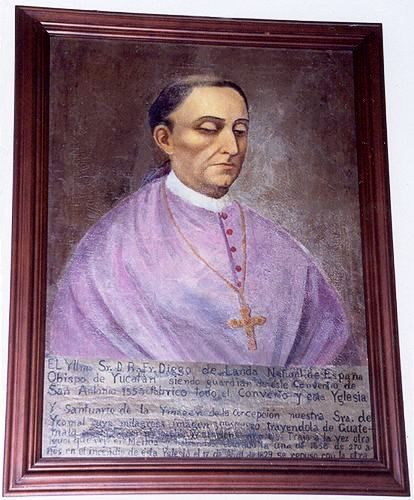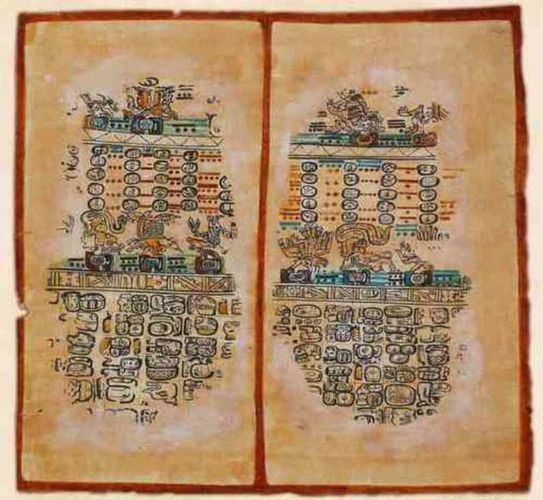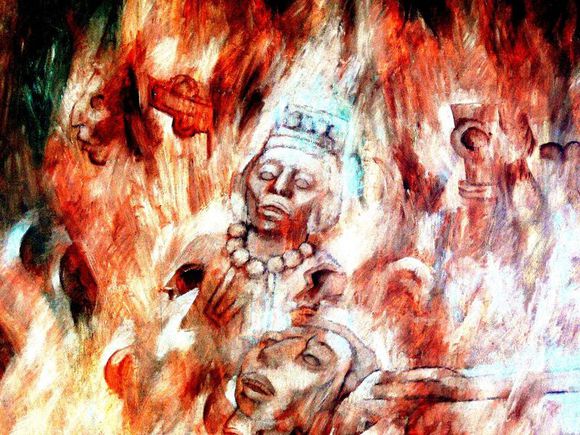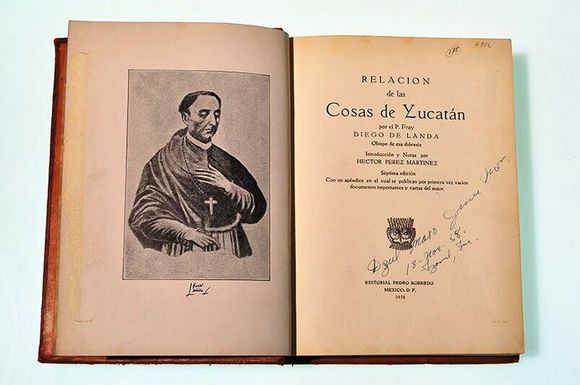Mérida, Yucatán, (July 13, 2021).- 459 years ago, a 38-year-old Franciscan clergyman was able to destroy numerous Maya codices in which the entire history and beliefs of the Maya culture in Yucatán were reflected, he managed to commit this atrocity in one single night.
We are talking about Fray Diego de Landa Calderón, the missionary who arrived in Yucatecan lands entrusted by the Catholic Church and the Spanish crown to convert the native Mayas who were being conquered to Catholicism.

As part of an inquisitorial process that arose in the Maya region, on July 12, 1562, the Franciscan Fryar started a large fire in the municipality of Maní. There, he burned sacred objects and 27 codices in which all the life, history, and world vision of the Maya were contained.
How did Fray Diego de Landa get to Yucatán?
Sent by the Spanish crown to evangelize the conquered lands together with another group of Catholic priests, some 13 years before this burning of the Maya idols and documents in Maní, Fray Diego de Landa undertook a learning journey about the Maya culture.
He was known as the missionary who walked the most through the jungle of the Yucatan Peninsula, to learn as much as possible about the Maya. He even managed to learn the basics of the Maya language, and he interacted a great deal with the indigenous people of Yucatan, which makes it even more inexplicable that he ended up burning such valuable documents.

Thus the friar was gaining the trust of the settlers, who ended up showing him some sacred writings, which he considered as diabolical beliefs.
During those years, De Landa began to come to terms with the idea that in Yucatan there was a clandestine network of Maya “apostates” who wanted to empower the “forces of the devil” before Catholicism did, and he decided to stop them.
The missionary believed that this clandestine network of Maya indigenous people sought to impose the worship of the devil in the Peninsula and that is why he decided to destroy the codices and sacred objects.
Burning of the Mayan codices on July 12
By 1562 the Spanish Inquisition was at its peak, which made it easier for Fray Diego de Landa to carry out the “Auto de Fe de Maní”, a figure of the Inquisition that forced potential believers in things of the devil to repent in public events.
An unknown number of Mayas were called to the “Auto de Fe” in which they were tortured to acknowledge their “fanaticism for gods far removed from the Christian faith.” After the burning of their idols and identity, some of the indigenous people committed suicide.

In the process of July 12, 1562, an uncertain number of Maya codices and books (27 according to Landa) and approximately 5,000 diverse religious figures were destroyed.
It is estimated that Maya documents equivalent to tons of books were incinerated. Those documents contained written records of all aspects of the Maya civilization. The scholar Sylvanus G. Morley states that Landa destroyed 191 idols, 27 codices, and 14 temples.
Only four original books with Maya writing or codices are known to have survived the destruction of the 1562 ceremony. These surviving works are the so-called Maya Codices.
The friar repents
It is believed that Fray Diego de Landa Calderón repented years later of the atrocities he committed because in 1566 he wrote his book, Relationship of Things to Yucatán, where he tries to describe what the Maya world he found was like.
Then he wrote a Christian doctrine in the Maya language, which he learned how to speak, and had it printed in Mexico City in 1575. He was also bishop of the Archdiocese of Yucatán between 1572 and 1579.

Despite his efforts, the damage was never repaired, because his writings on Maya life were not exact and, on the contrary, were contradictory, which led researchers such as Charles Étienne Brasseur de Bourbourg to fail in the translation of the Maya codices that did not were destroyed.
By 1950, the Russian linguist Yuri Knórozov officially discarded any document made by De Landa, as his work was not useful to understand the language of this ancient culture.
Source: Sipse



